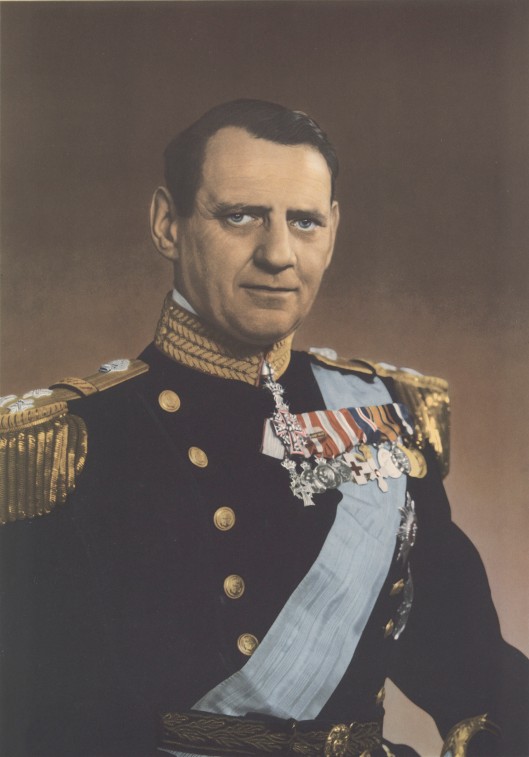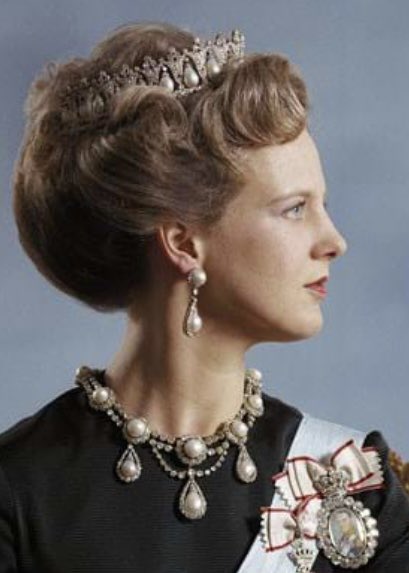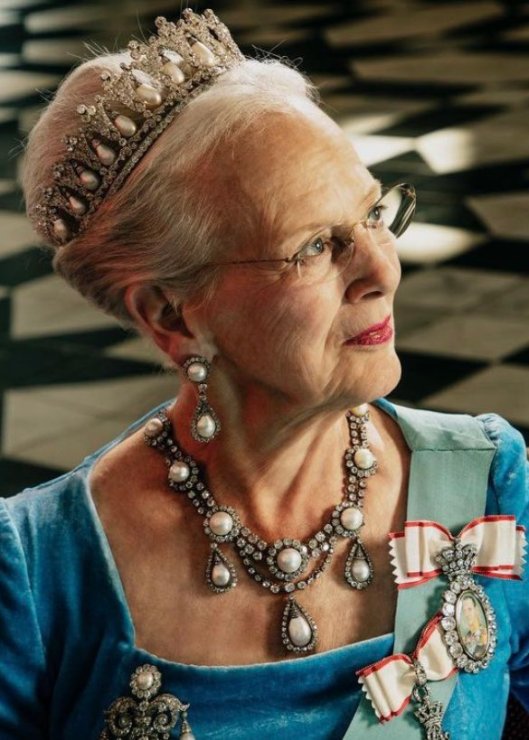Tags
Alexandrine of Mecklenburg-Schwerin, Diamond Jubilee, Frederik IX of Denmark, Ingrid of Sweden, King Christian X of Denmark, Margaret of Connaught, Margrethe II of Denmark, Princess Märtha of Sweden
Today marks the 50th anniversary of the death of King Frederik IX of Denmark and the accession of Queen Margrethe II of Denmark to the Danish throne upon her father’s death.
King Frederik IX died at the age of 72 after a reign of almost 25 years.

Frederik IX (Christian Frederik Franz Michael Carl Valdemar Georg; March 11, 1899 – January 14, 1972) was King of Denmark from 1947 to 1972.
Born into the House of Glücksburg, Frederik was the elder son of King Christian X and Alexandrine of Mecklenburg-Schwerin. He became crown prince when his father succeeded as king in 1912. As a young man, he was educated at the Royal Danish Naval Academy.
During Nazi Germany’s occupation of Denmark, Frederick acted as regent on behalf of his father from 1942 until 1943.
In the 1910s, Alexandrine considered the two youngest daughters of her cousin Emperor Nicholas II, Grand Duchess Maria Nikolaevna of Russia and Grand Duchess Anastasia Nikolaevna of Russia, as possible wives for Frederik, until the execution of the Romanov family in 1918. In 1922, Frederik was engaged to Princess Olga of Greece and Denmark, his second cousin. They never wed.
Instead, on March 15, 1935, a few days after his 36th birthday, Frederik was engaged to Princess Ingrid of Sweden (1910–2000), a daughter of Crown Prince Gustaf Adolf (later King Gustaf VI Adolf of Sweden) and his first wife, Princess Margaret of Connaught.

They were related in several ways. In descent from Oscar I of Sweden and Leopold, Grand Duke of Baden, they were double third cousins. In descent from Emperor Paul I of Russia, Frederik was a fourth cousin of Ingrid’s mother.
They married in Stockholm Cathedral on May 24, 1935. Their wedding was one of the greatest media events of the day in Sweden in 1935, and among the wedding guests were the King Christian X and Queen Alexandrine of Denmark, the King Leopold III Queen Astrid of Belgium and the Crown Prince Olaf and Crown Princess Märtha of Norway.
Changes to the Act of Succession
As King Frederik IX and Queen Ingrid had no sons, it was expected that the king’s younger brother, Prince Knud, would inherit the throne, in accordance with Denmark’s succession law (Royal Ordinance of 1853).
However, in 1953, an Act of Succession was passed, changing the method of succession to male-preference primogeniture (which allows daughters to succeed if there are no sons).
This meant that his daughters could succeed him if he had no sons. As a consequence, his eldest daughter, Margrethe, became heir presumptive. By order of March 27, 1953 the succession to the throne was limited to the issue of King Christian X.
Frederik became king on his father’s death in early 1947. During Frederik IX’s reign Danish society changed rapidly, the welfare state was expanded and, as a consequence of the booming economy of the 1960s, women entered the labour market.

The modernization brought new demands on the monarchy and Frederik’s role as a constitutional monarch. Frederik IX died on January 14, 1972, and was succeeded by his eldest daughter, Queen Margrethe II.
On her accession, Queen Margrethe II, became the first female monarch of Denmark since Margrethe I, ruler of the Scandinavian kingdoms in 1375–1412 during the Kalmar Union.
In 1967, Margrethe married Henri de Laborde de Monpezat, with whom she had two sons: Crown Prince Frederik and Prince Joachim.
Margrethe is known for her strong archaeological passion and has participated in several excavations, including in Italy, Egypt, Denmark and South America. She shared this interest with her grandfather Gustaf VI Adolf of Sweden, with whom she spent some time unearthing artefacts near Etruria in 1962.
As of 2021, Queen Margrethe II has, as sovereign, received 42 official state visits and she has undertaken 55 foreign state visits herself. In addition to this, the Queen and the royal family have made several other foreign visits. Support for the monarchy in Denmark has been and remains consistently high at around 82%, as does Margrethe’s personal popularity.
